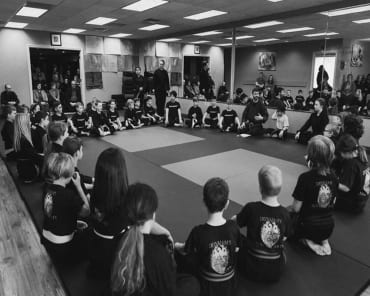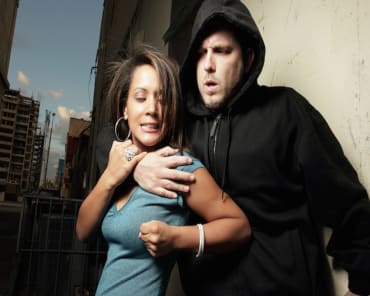Everybody has a plan till they get smacked in the mouth.
- Iron Mike TysonIn the field of General Semantics, there is a concept called the "Map-Territory Relation." The founder of General Semantics, Alfred Korzybski, famously stated in 1931 that "the map is not the territory," meaning that the awareness of the thing and the symbols we use to perceive it (in this case, the map) are not the same as the actual thing itself (the territory). General Semantics is the idea that our beliefs are formed by our perceptions of the world and specifically the language we use to define it. So a symbol such as a map, while useful as a tool to understand the lay of the land, is not actually the land itself which is completely separate and unique in physical and experiential reality.
The Belgian surrealist René Magritte addressed a similar concept in his painting The Treachery of Images. The painting is of a wooden tobacco pipe, with the words "this is not a pipe" written underneath it in french. And of course, Magritte was correct. For it is not a pipe, but rather an image of a pipe. Yet many who would look at the painting may be forgiven if at first they wonder how the artist could be so mistaken. For clearly, we see a pipe.
In our study of combat we discuss entry techniques, feints and distractions, set up strikes, combinations, defense and striking open zones, control maneuvers, repositioning techniques, and finishing moves. We talk about how to engage our opponent from different ranges, and which techniques to employ during each phase of the combat situation. We discuss how to approach unique aspects of combat differently, if the opponent attacks from the obscure zone we turn and face with zone coverage, if the opponent has our back we go stomach to stomach, if the opponent attacks our weak line we adjust our angle. We talk about how to counter our opponent's techniques, and what possible counters he may use, and how to counter his counters.
Generally speaking, in case of a fire in your home you need to get close to the floor, alert everyone, check doors for heat before opening them, and escape. Generally speaking, in case of an automobile accident you need to check for injuries, remain calm, and alert the necessary emergency services. Generally speaking, in the case of a home invasion you need to escape the home and call for help. Generally speaking, when I am engaged at range, I strike with kicks and punches, use cover positions to bridge the gap, close with my opponent using grabs and continued off hand striking, move to a control position, takedown and finish. It's good to have a plan.
But the plan is not the fight. Moltke the Elder taught us that "no plan survives first contact with the enemy." Even a plan which takes in to account our opponent, his strengths and weaknesses, his tactics and strategy, and his possible counters and our counters to his counters, is immediately obsolete once battle is joined. The original plan doesn't exist anymore, because the parameters have changed. The opponent moves left instead of right. The lighting is inconsistent. It begins to rain. You are tired, or sick, or injured. The plan is not the fight. The map is not the territory. The painting is not the pipe. All the training and talking and study you've done in the dojo is in preparation, but training is not combat and your opponent is not your friend.
Everything is context specific. That is why the first consideration of combat is Environment. The targets you strike. The strikes you use. The range at which you engage. The way in which you engage. The intensity with which you engage. Is this a drunken reveler on New Year's Eve? Is this a desperate man fighting for a crust of bread? Is this a violent sociopath who will not stop assaulting you because you have yielded? Is your family in danger? Is there a chance to escape?
Everything is context specific. Do you grapple or strike? Do you follow your opponent to the ground with the takedown or remain standing to engage or escape from there? What do you know of your opponent? What are his strengths? What are his weaknesses? What are your strengths and weaknesses? The man who knows himself and his opponent will not be imperiled in a hundred battles. Are there multiple opponents? Are they armed?
What we do in the karate school is make plans. We explore and study and dissect and examine and question and theorize and test. We follow a progressive system of expansive combat training which builds each skill upon previous simpler skills and futilely attempts to answer all possible questions about a dynamic situation of infinite possibility. The systems are artificial, because they seek to codify something which resists codification. At best, we can only imagine possible combat scenarios and apply our knowledge to those possibilities. We are drawing maps of fighting so we know which way to go.
But a map is a useful tool. It tells you where to turn. It tells you what to expect ahead. It tells you where be dragons. You wouldn't leave home without a map. And when you get lost, the proper thing to do is pull the map back out and find out where you are, and how to get where you want to go. Maps make safe travel possible, because they allow the traveler to prepare for the challenge ahead. That is why we paint pictures of fights in the karate school and why we practice self defense techniques against a number of attacks in a number of possible formations. That is why we ask questions, and seek the truth of combat, and practice that truth on the body. That is why we do the pushups and hit the pads. That is why we return, year after year, and stand on the line and set our Neutral Bow. We are studying the map, so that if we get lost, we know where to go.
But never make the mistake of thinking you are fighting when you are really training. We can only simulate the ultimate life or death combat scenario. We do not actually experience it. Your training partner is not going to kill you and though you may be injured in the karate school from time to time, you are not being actively assaulted. You are engaging in a practice, sometimes intense, which is designed to represent the combat engagement. But should you find yourself in a real fight, you must be prepared to change your plans to reflect the fluid nature of existing conditions. Or you must be prepared to lose. Fallen Sword in the karate school is a very specific response to a very specific attack practiced in a very specific manner where you strike very specific targets and your opponent responds in a very specific way. It is play acting. It is not a fight. Neither is randori, or sparring, or rolling, or Tiger in the Cage, or spontaneous defense. Neither even is full combat. Not in the karate school. It is training. It is making plans.
You need to make plans. That's why you have come to the karate school. To take the next step on mastering a unique and powerful art. To follow in the footsteps of those who've come before you. To learn how to fight, and why, and to prepare yourself for a fight which we should all hope never actually takes place. Sun Tzu's Nine Terrains teach us to plan according to the situation, to move to positions of strength, avoid combat, use environment to our advantage, marshall resources, and only when on death ground, to fight. The plan is to position yourself in such a way as to not have to engage the enemy. We plan not to fight, but no plan survives first contact with the enemy. And so we plan how we will fight as well.
Plans are important. But a fight is a fight. Ceci n'est pas une pipe.
Drills -
Beginner: Practice your beginner self defense techniques. Realize that each one is a like a photograph of a moment in time. Have the opponent circle you, occasionally throwing the proscribed attack for each technique, and perform the technique as perfectly as possible, again and again. Practice this with one attack and one technique at a time.
Intermediates: Practice your sparring. Choose one technique, like Penetrating the Wall, and practice apply thing technique to every attack your opponent gives you. Jab, Cross, Kick, Punch, Grapple, Inside, Outside, Penetrating the Wall, again and again. Practice adjusting your opponent's position to make your technique apply and practice adjusting your technique to apply it to your opponent's position.
Advanced: Engage in Free Combat drills, with an eye to where techniques appear within the engagement. If the opponent attacks with a jab and you defend and counter with a kick, that is Fallen Sword. If the opponent attacks with a high grab and you counter with a trapping grapple, that is Entrapping Circles. If the opponent attacks with a low kick and your respond with a leg hold that is Defensive Cross. If the opponent attacks with a low body lock and you sprawl and turn the corner, that is Taming the Bull. Understand that the techniques occur naturally, without the need to "make" them happen, and that by recognizing where they appear you can see the signs on the map pointing you to your destination.







